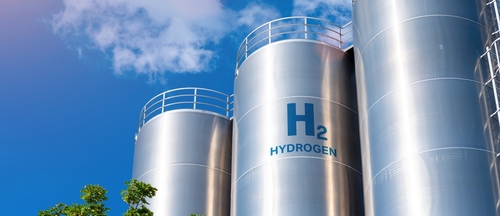Industry mixed on Treasury’s green hydrogen tax credits proposal

The industry reaction to the U.S. Treasury Department’s proposed guidance on green hydrogen investment and production tax credits was decidedly mixed.
The Treasury’s Clean Hydrogen Production Credit provides incentives to accelerate development of the clean hydrogen industry. The proposal features credit tiers based on the emissions rate of a hydrogen production process. The amount of the credit ranges from $.60 per kilogram (kg) of hydrogen produced to $3 per kg of hydrogen, depending on the lifecycle emissions of the hydrogen production.
Among the industry groups that reacted to the proposal was the American Clean Power Association (ACP), which said the proposed guidance contains a fatal – but fixable – flaw.
“Specifically, imposing an hourly matching provision too early for first-wave green hydrogen projects will discourage a significant majority of clean power companies from investing in green hydrogen manufacturing and facilities. ACP is encouraged to see that the Treasury Department has specifically requested comment on the adequacy of the transition schedule. The proposed timeline is a fundamental obstacle to the commercialization of green hydrogen in the U.S.,” ACP CEO Jason Grumet said.
Grumet said that offering additional flexibility in time-matching requirements will enable investment in a first wave of 20 to 40 commercial-scale facilities by 2032. While adequate to jumpstart the green hydrogen industry, this deployment represents only 3-5 percent of the Administration’s 50 MMT annual green hydrogen production goal. He added that it would jeopardize the economic feasibility of these early projects.
“The environmental risk that green hydrogen, a critical decarbonization solution, will remain on the sidelines for the next 30 years is vastly greater than the perceived risk associated with providing additional flexibility in the transition timeline. It is perplexing to see the Biden Administration propose a short-term strategy that could threaten net-zero ambitions and long-term energy security and economic goals,” he added.
Grumet said ACP is hopeful that the Biden Administration will make the necessary changes to fix this provision.
The American Petroleum Institute (API) acknowledged that the expansion of a hydrogen economy is critical to meeting emissions reductions goals, particularly in sectors such as shipping, cement, and steel manufacturing.
API Senior Vice President of Policy, Economics and Regulatory Affairs Dustin Meyer said that with the appropriate policies in place, the U.S. hydrogen economy could generate 700,000 jobs and an economic benefit of $140 billion by 2030. However, the current proposed production capacity of 6.5 MMT by 2030 still lags U.S. Department of Energy’s (DOE) goal of 10 MMT by the end of the decade.
“Clear, consistent policies – from Treasury’s 45V guidance to the permitting process for hydrogen infrastructure – are critical to achieving DOE’s hydrogen goals and accelerating emissions reductions across the economy,” he said.
Marty Durbin, president of the U.S. Chamber’s Global Energy Institute, raised concerns that the proposal would stunt the growth of the industry before it has even begun.
“Unfortunately, the restrictions in the proposed regulations—which didn’t come from Congress—threaten to steer investment elsewhere, harming efforts to reduce emissions in hard-to-decarbonize industrial sectors. Ceding American leadership in this area would be a grave mistake. The Chamber will forcefully advocate during the public comment process for the flexibility needed to kickstart investment, create jobs and economic growth, and meet our decarbonization goals,” Durbin said.
